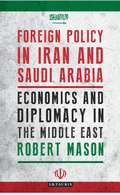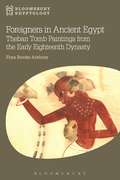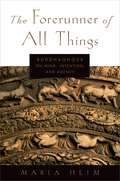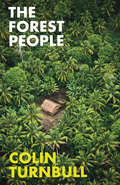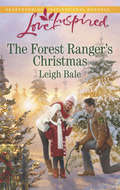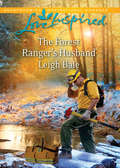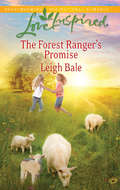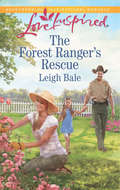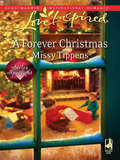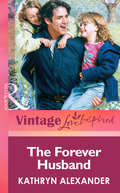- Table View
- List View
Foreign Cults in Rome: Creating a Roman Empire
by Eric OrlinReligion is a particularly useful field within which to study Roman self-definition, for the Romans considered themselves to be the most religious of all peoples and ascribed their imperial success to their religiosity. This study builds on the observation that the Romans were remarkably open to outside influences to explore how installing foreign religious elements as part of their own religious system affected their notions of what it meant to be Roman. The inclusion of so many foreign elements posed difficulties for defining a sense of Romanness at the very moment when a territorial definition was becoming obsolete. Using models drawn from anthropology, this book demonstrates that Roman religious activity beginning in the middle Republic (early third century B.C.E.) contributed to redrawing the boundaries of Romanness. The methods by which the Romans absorbed cults and priests and their development of practices in regard to expiations and the celebration of ludi allowed them to recreate a clear sense of identity, one that could include the peoples they had conquered. While this identity faced further challenges during the civil wars of the Late Republic, the book suggests that Roman openness remained a vital part of their religious behavior during this time. Foreign Cults in Rome concludes with a brief look at the reforms of the first emperor Augustus, whose activity can be understood in light of Republican activity, and whose actions laid the foundation for further adaptation under the Empire.
Foreign Policy in Iran and Saudi Arabia: Economics and Diplomacy in the Middle East (Library Of Modern Middle East Studies)
by Robert MasonSaudi Arabia, with its US alliance and abundance of oil dollars, has a very different economic story to that of Iran, which despite enormous natural gas reserves, has been hit hard by economic, trade, scientific and military sanctions since its 1979 revolution. Robert Mason looks at the effect that economic considerations (such as oil, gas, sanctions, trade and investment) have had on foreign policy decision-making processes and diplomatic activities. By examining the foreign policies of Saudi Arabia and Iran towards each other, and towards the wider Middle East and beyond, Mason seeks to highlight how oil policy, including oil production, pricing and security of supply and demand, is the paramount economic factor which drives the diplomacy and rivalry of these two pivotal regional powers. His book thus offers vital analysis for researchers of international relations in the Middle East and the processes involved in the formation of foreign policy.
Foreigners in Ancient Egypt: Theban Tomb Paintings from the Early Eighteenth Dynasty (Bloomsbury Egyptology)
by Flora Brooke AnthonyIn ancient Egypt, one of the primary roles of the king was to maintain order and destroy chaos. Since the beginning of Egyptian history, images of foreigners were used as symbols of chaos and thus shown as captives being bound and trampled under the king's feet. The early 18th dynasty (1550-1372 BCE) was the height of international trade, diplomacy and Egyptian imperial expansion. During this time new images of foreigners bearing tribute became popular in the tombs of the necropolis at Thebes, the burial place of the Egyptian elite. This volume analyses the new presentation of foreigners in these tombs. Far from being chaotic, they are shown in an orderly fashion, carrying tribute that underscores the wealth and prestige of the tomb owner. This orderliness reflects the ability of the Egyptian state to impose order on foreign lands, but also crucially symbolises the tomb owner's ability to overcome the chaos of death and achieve a successful afterlife. Illustrated with colour plates and black-and-white images, this new volume is an important and original study of the significance of these images for the tomb owner and the functioning of the funerary cult.
Foreigners in Ancient Egypt: Theban Tomb Paintings from the Early Eighteenth Dynasty (Bloomsbury Egyptology)
by Flora Brooke AnthonyIn ancient Egypt, one of the primary roles of the king was to maintain order and destroy chaos. Since the beginning of Egyptian history, images of foreigners were used as symbols of chaos and thus shown as captives being bound and trampled under the king's feet. The early 18th dynasty (1550-1372 BCE) was the height of international trade, diplomacy and Egyptian imperial expansion. During this time new images of foreigners bearing tribute became popular in the tombs of the necropolis at Thebes, the burial place of the Egyptian elite. This volume analyses the new presentation of foreigners in these tombs. Far from being chaotic, they are shown in an orderly fashion, carrying tribute that underscores the wealth and prestige of the tomb owner. This orderliness reflects the ability of the Egyptian state to impose order on foreign lands, but also crucially symbolises the tomb owner's ability to overcome the chaos of death and achieve a successful afterlife. Illustrated with colour plates and black-and-white images, this new volume is an important and original study of the significance of these images for the tomb owner and the functioning of the funerary cult.
The Forerunner of All Things: Buddhaghosa on Mind, Intention, and Agency
by Maria HeimScholars have long been intrigued by the Buddha's defining action (karma) as intention. This book explores systematically how intention, agency, and moral psychology were interpreted in all branches of early Theravada thought, paying special attention to the thought of the 5th-century commentator Buddhaghosa.
Forest Dark
by Nicole KraussFrom the bestselling, twice Orange Prize-shortlisted, National Book Award-nominated author comes a vibrant tale of transformation: of a man in his later years and a woman novelist, each drawn to the Levant on a journey of self-discoveryJules Epstein has vanished from the world. He leaves no trace but a rundown flat patrolled by a solitary cockroach, and a monogrammed briefcase abandoned in the desert. To Epstein's mystified family, the disappearance of a man whose drive and avidity have been a force to be reckoned with for sixty-eight years marks the conclusion of a gradual fading. This transformation began in the wake of Epstein's parents' deaths, and continued with his divorce after more than thirty-five years of marriage, his retirement from a New York legal firm, and the rapid shedding of possessions he'd spent a lifetime accumulating. With the last of his wealth and a nebulous plan, he departs for the Tel Aviv Hilton.Meanwhile, a novelist leaves her husband and children behind in Brooklyn and checks into the same hotel, hoping that the view of the pool she used to swim in on childhood holidays will unlock her writer's block. But when a man claiming to be a retired professor of literature recruits her for a project involving Kafka, she is drawn into a mystery that will take her on a metaphysical journey and change her in ways she could never have imagined. Bursting with life and humour, this is a profound, mesmerising, achingly beautiful novel of metamorphosis and self-realisation – of looking beyond all that is visible towards the infinite.
The Forest People
by Colin M TurnbullThe Forest People is an astonishingly intimate and life-enhancing account of a hunter-gatherer tribe living in harmony with nature -- and an all-time classic of anthropology.For three years, Colin Turnbull lived with an isolated group of Pygmies deep in the forest of the African Congo, experiencing their daily life first-hand. He attended their hunting parties and initiation ceremonies, witnessed their music and their rituals, observed their quarrels and love affairs. He documented them as an anthropologist but was accepted among them as a friend.A ground-breaking work in its time, The Forest People made him one of the most famous intellectuals of the 1960s and 1970s. It remains a transporting account of an earthly paradise and of a legendary and fascinating people.With a new foreword by Horatio Clare.
The Forest Ranger's Child (Mills And Boon Love Inspired Ser.)
by Leigh BaleInspiring and enriching romances about faith, hope and the healing power of love. NOWHERE TO GO BUT HOME
The Forest Ranger's Christmas: Alaskan Sweethearts The Forest Ranger's Christmas A Home For Her Family (Mills And Boon Love Inspired Ser.)
by Leigh BaleA Small-Town Christmas
The Forest Ranger's Husband (Mills And Boon Love Inspired Ser.)
by Leigh BaleA Father's Return Standing before Fire Control Officer Matt Cutter is a five-year-old replica of himself—the son he never knew he had. All Matt wants to do is hug little Davie and make up for the lost years. But forest ranger Andie Foster, the boy’s mother whom Matt left behind, is understandably afraid.
The Forest Ranger's Promise (Mills And Boon Love Inspired Ser.)
by Leigh BaleManaging a Wyoming sheep ranch and a feisty little girl isn't easy for widow Melanie MacAllister. The last thing she needs is yet another forest ranger to stir up trouble for the ranchers.
The Forest Ranger's Rescue: A Wife For Jacob The Forest Ranger's Rescue Alaskan Homecoming (Mills And Boon Love Inspired Ser.)
by Leigh BaleRomancing the Ranger
The Forest Ranger's Return: The Cowboy's Reunited Family The Forest Ranger's Return Mommy Wanted (Mills And Boon Love Inspired Ser.)
by Leigh BaleThe Soldier's Second Chance
Forever: (Angels Among Us #3)
by Linn B HaltonHarperImpulse Paranormal Romance Novella FOREVER Ceri is alone for a reason. She’s not meant to fall in love. She’s here for one purpose only.
Forever (A Temptation Novel #3)
by Karen Ann HopkinsAll I want is my happily ever after. That’s all I’ve wanted since meeting Noah Miller.
Forever a Family: Her Montana Cowboy Redeeming The Rancher Forever A Family (Rosewood, Texas #8)
by Bonnie K. WinnA Hero's Rescue
A Forever Christmas (Mills And Boon Love Inspired Ser.)
by Missy TippensSarah Radcliffe's quiet Christmas back in her hometown will be lost if she agrees to direct the church's Christmas pageant. But when she meets two little boys determined to gain their father's attention, Sarah agrees to help. Then she discovers that the dad in question is Gregory Jones, the man she loved and lost.
The Forever Family (Mills And Boon Love Inspired Ser.)
by Leigh BaleSeeking a fresh start, widow Rachel Walker headed west. She never expected a freak Nevada storm–or the rugged Sam Thorne to rescue her. With a broken arm and a young son to care for, Rachel is depending on the kindness of the handsome stranger. The gruff small-town vet isn't thrilled Rachel and Danny have invaded his well-ordered life.
Forever Her Hero (Mills & Boon Love Inspired): Jedidiah's Bride Loving The Lawman Forever Her Hero
by Belle CalhouneA Time to Heal
The Forever Husband (Mills And Boon Vintage Love Inspired Ser.)
by Kathryn AlexanderA HUSBAND FOR ALL REASONS
The Forge and the Crucible: The Origins and Structure of Alchemy
by Mircea EliadePrimitive man's discovery of the ability to change matter from one state to another brought about a profound change in spiritual behavior. In The Forge and the Crucible, Mircea Eliade follows the ritualistic adventures of these ancient societies, adventures rooted in the people's awareness of an awesome new power. The new edition of The Forge and the Crucible contains an updated appendix, in which Eliade lists works on Chinese alchemy published in the past few years. He also discusses the importance of alchemy in Newton's scientific evolution.
The Forge and the Crucible: The Origins and Structure of Alchemy
by Mircea EliadePrimitive man's discovery of the ability to change matter from one state to another brought about a profound change in spiritual behavior. In The Forge and the Crucible, Mircea Eliade follows the ritualistic adventures of these ancient societies, adventures rooted in the people's awareness of an awesome new power. The new edition of The Forge and the Crucible contains an updated appendix, in which Eliade lists works on Chinese alchemy published in the past few years. He also discusses the importance of alchemy in Newton's scientific evolution.
The Forge and the Crucible: The Origins and Structure of Alchemy
by Mircea EliadePrimitive man's discovery of the ability to change matter from one state to another brought about a profound change in spiritual behavior. In The Forge and the Crucible, Mircea Eliade follows the ritualistic adventures of these ancient societies, adventures rooted in the people's awareness of an awesome new power. The new edition of The Forge and the Crucible contains an updated appendix, in which Eliade lists works on Chinese alchemy published in the past few years. He also discusses the importance of alchemy in Newton's scientific evolution.
Forgery and Counterforgery: The Use of Literary Deceit in Early Christian Polemics
by Bart D. Ehrman"Arguably the most distinctive feature of the early Christian literature," writes Bart Ehrman, "is the degree to which it was forged." The Homilies and Recognitions of Clement; Paul's letters to and from Seneca; Gospels by Peter, Thomas, and Philip; Jesus' correspondence with Abgar, letters by Peter and Paul in the New Testament--all forgeries. To cite just a few examples. Forgery and Counterforgery is the first comprehensive study of early Christian pseudepigrapha ever produced in English. In it, Ehrman argues that ancient critics--pagan, Jewish, and Christian--understood false authorial claims to be a form of literary deceit, and thus forgeries. Ehrman considers the extent of the phenomenon, the "intention" and motivations of ancient Greek, Roman, and Jewish forgers, and reactions to their work once detected. He also assesses the criteria ancient critics applied to expose forgeries and the techniques forgers used to avoid detection. With the wider practices of the ancient world as backdrop, Ehrman then focuses on early Christian polemics, as various Christian authors forged documents in order to lend their ideas a veneer of authority in literary battles waged with pagans, Jews, and, most importantly, with one another in internecine disputes over doctrine and practice. In some instances a forger directed his work against views found in another forgery, creating thereby a "counter-forgery." Ehrman's evaluation of polemical forgeries starts with those of the New Testament (nearly half of whose books make a false authorial claim) up through the Pseudo-Ignatian epistles and the Apostolic Constitutions at the end of the fourth century. Shining light on an important but overlooked feature of the early Christian world, Forgery and Counterforgery explores the possible motivations of the deceivers who produced these writings, situating their practice within ancient Christian discourses on lying and deceit.

